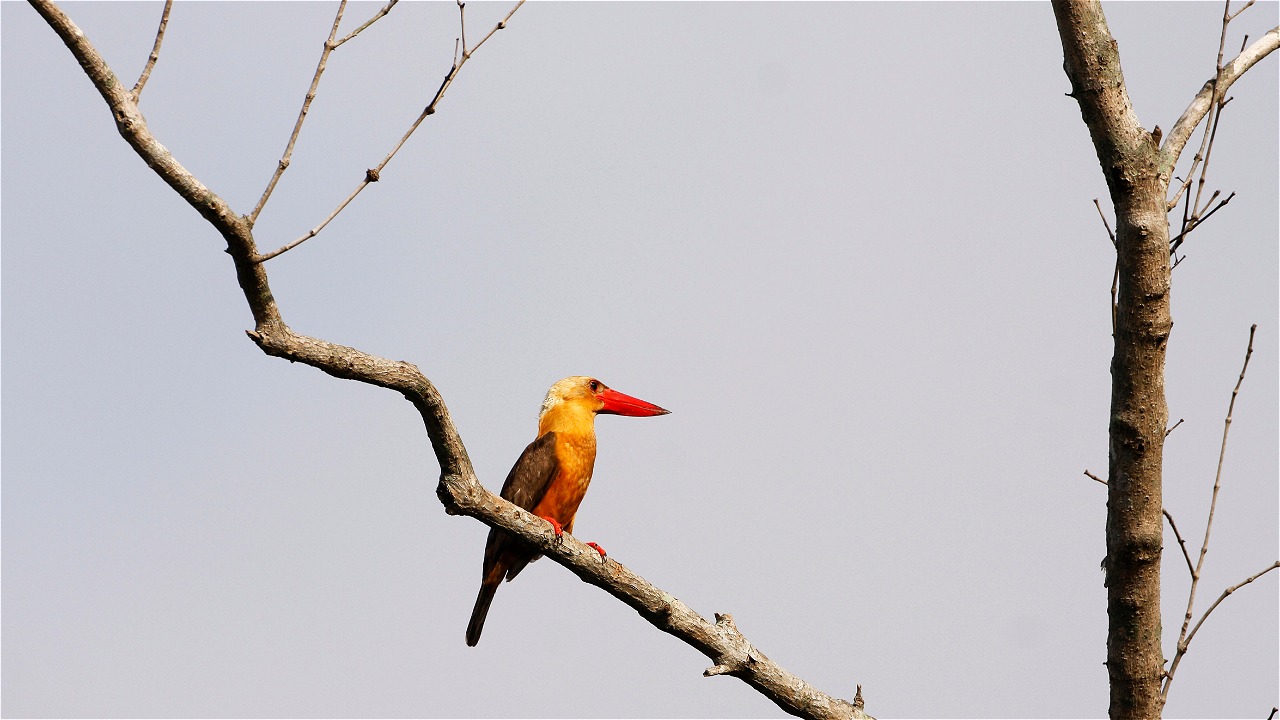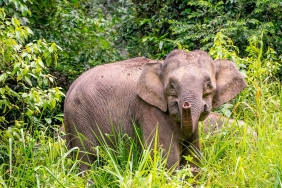EXPLORING THE POTENTIAL OF BIRD-WATCHING TOURISM IN THE BUKIT BARISAN SELATAN NATIONAL PARK
The sun was not yet high when the team entered Pemerihan forest, Bukit Barisan Selatan National Park. The sounds of wildlife and gurgling river water are clearly heard between the trees. Bukit Barisan Selatan National Park is one of the last remaining natural forests on the island of Sumatra. The biodiversity in this place is a very potential tourist attraction if developed. Regarding ecotourism, Pemerihan Resort and Sukaraja Resort are two resorts in the TNBBS area with high ecotourism potential. In addition to the potential of its diverse landscapes ranging from hilly areas with potential waterfalls to coastal and marine ecosystems and potential flora and fauna.
One potential that is no less important in the field of science and tourism is the diversity of bird species owned by TNBBS. This diversity of bird species has the potential to be used as a bird watching site, which has recently been increasingly loved by tourists as a special interest tour. Unfortunately, currently the potential of bird watching in TNBBS has not been maximally explored. Therefore, the WWF team in collaboration with birdwatching consultants conducted a search at Pemerihan Resort and Kubu Perahu to find out potential observation points as bird observation points and inventory the diversity of birds in Bukit Barisan Selatan National Park.
After the team made observations for 7 days, the team found that the presence of birds in these 2 locations was quite diverse. In the Pemerihan Resort and Balik Bukit Resort areas, at least 138 bird species from 38 tribes were found with the highest number of bird species found in Balik Bukit Resort, namely 106 species belonging to 32 tribes. While the number of bird species at Pemerihan Resort is 102 species belonging to 35 tribes. There are several bird species that can only be found in one of the two locations surveyed. There are 34 bird species found only in Pemerihan Resort and 38 bird species found only in Balik Bukit Resort.
Some of the bird species found only at Pemerihan Resort are golden pekaka (Pelargopsis capensis), sandang-lawe stork (Ciconia episcopus), green pergam (Ducula aenea), and blue kirik-kirik (Merops viridis). Some bird species that are only found in Balik Bukit Resort are the stone-cockatoo (Lacedo pulchella), Malay forest-cockatoo (Actenoides concretus), ivory-billed hornbill (Rhinoplax vigil) and pruned woodpecker (Blythipicus rubiginosus). There are also birds endemic to Sumatra Island found in both resorts, namely crested poxai (Garrulax leucolophus) in Pemerihan Resort and white-throated bondol (Lonchura striata), Takur Bukit (Megalaima oorti), red-headed luntur (Harpactes erythrocephalus) found in Balik Bukit Resort. A striking difference between the two resorts is the type of bird that dominates the location.
Balik Bukit resort is dominated by forest birds because it is an upland forest, while Pemerihan resort is dominated by transitional birds because the data collection site is an open area dominated by shrubs.
37 bird species in Pemerihan Resort and 44 bird species in Balik Bukit Resort are included in the protection, trade and endangerment status referring to Law No. 5 of 1990 concerning Conservation of Natural Resources and Ecosystems, PP No. 7 of 1999 concerning Preservation of Plant and Animal Species, trade status refers to CITES (Convention on International Trade in Endangered Species of Wild Fauna and Flora) and endangerment status refers to IUCN (International Union for Conservation of Nature).
Based on trade status there are 10 bird species categorized as Appendix II in Pemerihan Resort, 20 bird species are protected and based on threat status there are 19 bird species with Near Threatened status. Meanwhile, in Balik Bukit Resort, based on trade status, there is one bird species categorized as Appendix I and 8 bird species categorized as Appendix II and there are 23 protected bird species. Based on threat status, one bird species is critically endangered, two bird species are threatened (Vurnerable) and 25 bird species are Near Threatened (Sukmantoro et al, 2007; IUCN 2017).
The availability of bird food in the Pemerihan Resort and Balik Bukit Resort area is quite abundant. The condition of the forest which is a tropical rainforest consisting of hilly forests with a variety of vegetation, tributaries and large rivers is able to provide abundant food for birds such as fruit, fish, shrimp, worms and insects that are food sources for various bird species such as rhinoceros hornbills (Buceros rhinoceros), ivory hornbills (Rhinoplax vigil), golden pekaka (Pelargopsis capensis), small green madi (Calyptomena viridis), cirik-cirik beetles (Nyctyornis amictus) and blue-collared king prawns (Alcedo euryzona). According to Wiens and Rotenberry (1981), birds will be more diverse in habitats that have an abundance of the resources they need, and conversely birds will be rare or difficult to find in environments that are less favorable for them. Rivers and the presence of variations in vegetation form many transitional areas (ecotones), so they are habitats rich in bird species diversity (Hernowo et al., 1991).
In this survey, it was found that the Pemerihan Resort and Balik Bukit Resort areas are heavily utilized by birds, including endemic Sumatran birds as well as several protected bird species, both nationally and internationally. The Pemerihan Resort and Balik Bukit Resort areas of TNBBS are very important in supporting the survival of these birds and are potential areas to be developed as ideal locations for birdwatching and for environmental education purposes. The presence of biotic and abiotic components such as water sources (rivers and waterfalls) and bird food trees such as banyan (ficus sp) can add to the attractiveness of bird presence so that it becomes a point of interest for consideration as a means of education and ecotourism. Mapping of high bird concentration points still needs to be done. In addition, the creation of observation trails in the form of short trails (loop tril) and long trails (long trill) will greatly support educational and ecotourism activities in the future.





